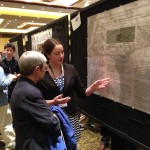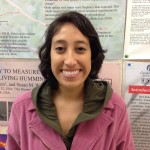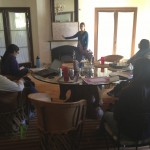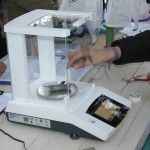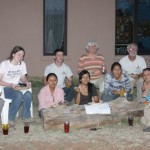 When school was over last spring the lab hardly had time to breath before we packed up and headed off to southeastern Arizona to start our first full season of data collection associated with the NASA project. Actually, I (Don) was the first to leave since I am too old to power through a drive from the north to the south end of the country in less than three days. Katie, Becca, and Joey on the other hand pretty much made it to Arizona at the same time I did but in one less day. We landed in Patagonia, AZ which would be our base of operations for the summer. This location is not only central to the landscapes we would work on this year but also near where friend and project collaborator Dr. Susan Wethington (Hummingbird Monitoring Network) lives.
When school was over last spring the lab hardly had time to breath before we packed up and headed off to southeastern Arizona to start our first full season of data collection associated with the NASA project. Actually, I (Don) was the first to leave since I am too old to power through a drive from the north to the south end of the country in less than three days. Katie, Becca, and Joey on the other hand pretty much made it to Arizona at the same time I did but in one less day. We landed in Patagonia, AZ which would be our base of operations for the summer. This location is not only central to the landscapes we would work on this year but also near where friend and project collaborator Dr. Susan Wethington (Hummingbird Monitoring Network) lives.
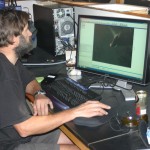 The first week of of the field season was intense training to get everyone up to speed on applying what we had learned in the lab to an actual field setting. After that the next couple weeks were split between kicking off our work and supporting a collaborative project with Dr. Bret Tobalske (University of Montana). The collaborative work was an extension of heat-balance work on calliope hummingbirds that we have been doing at Bret’s lab in Montana. Here in Arizona we added larger size hummingbirds to the mix in the hope of looking at how size might influence various aspects of hovering.
The first week of of the field season was intense training to get everyone up to speed on applying what we had learned in the lab to an actual field setting. After that the next couple weeks were split between kicking off our work and supporting a collaborative project with Dr. Bret Tobalske (University of Montana). The collaborative work was an extension of heat-balance work on calliope hummingbirds that we have been doing at Bret’s lab in Montana. Here in Arizona we added larger size hummingbirds to the mix in the hope of looking at how size might influence various aspects of hovering.
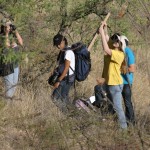 For the balance of the summer our team focused on four key experiments designed to assess the physiological response of hummingbirds to temperature in the field: 1) Thermal profiling of two distinct landscapes, 2) measurement of daily energy expenditure using a modified version of the doubly-labeled water (DLW) technique, 3) assessment of a hummingbird’s thermal load across a broad temperature range using infrared thermography, and 4) assessment of differences in torpor use by hummingbirds that live in different temperature regimes. We spent a total of 2.5 months in Arizona completing these experiments returning to Newberg on July 18. The students did a marvelous job. They worked hard and never complained about the sometimes long days. Over the next several weeks we will be frantically crunching numbers in preparation for submitting abstracts for the January SICB meeting in Austin, TX. The deadline is August 26 (YIKES!).
For the balance of the summer our team focused on four key experiments designed to assess the physiological response of hummingbirds to temperature in the field: 1) Thermal profiling of two distinct landscapes, 2) measurement of daily energy expenditure using a modified version of the doubly-labeled water (DLW) technique, 3) assessment of a hummingbird’s thermal load across a broad temperature range using infrared thermography, and 4) assessment of differences in torpor use by hummingbirds that live in different temperature regimes. We spent a total of 2.5 months in Arizona completing these experiments returning to Newberg on July 18. The students did a marvelous job. They worked hard and never complained about the sometimes long days. Over the next several weeks we will be frantically crunching numbers in preparation for submitting abstracts for the January SICB meeting in Austin, TX. The deadline is August 26 (YIKES!).
No photos available right now.
Please verify your settings, clear your RSS cache on the Slickr Flickr Admin page and check your Flickr feed

